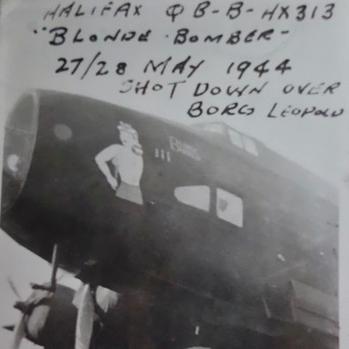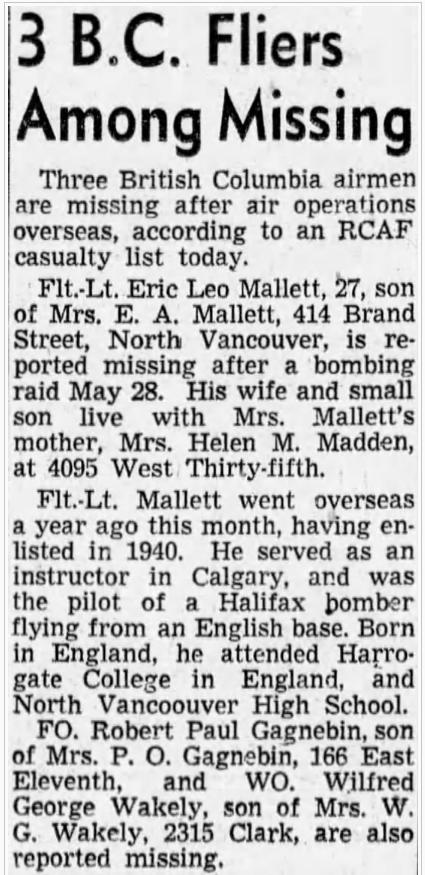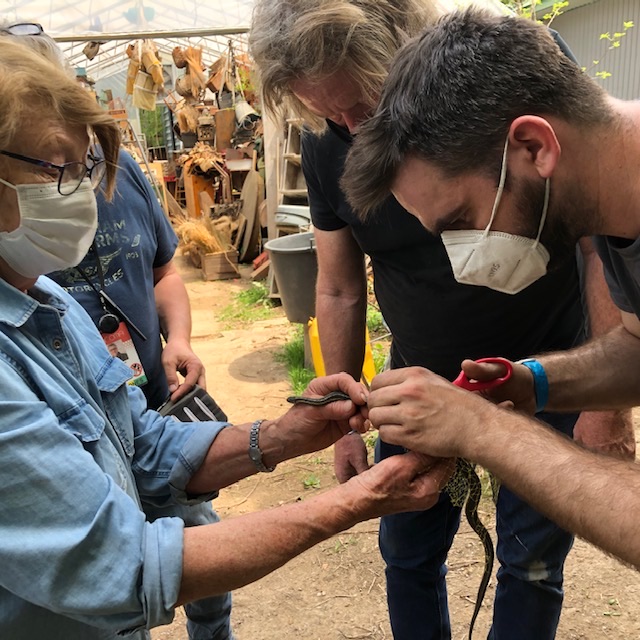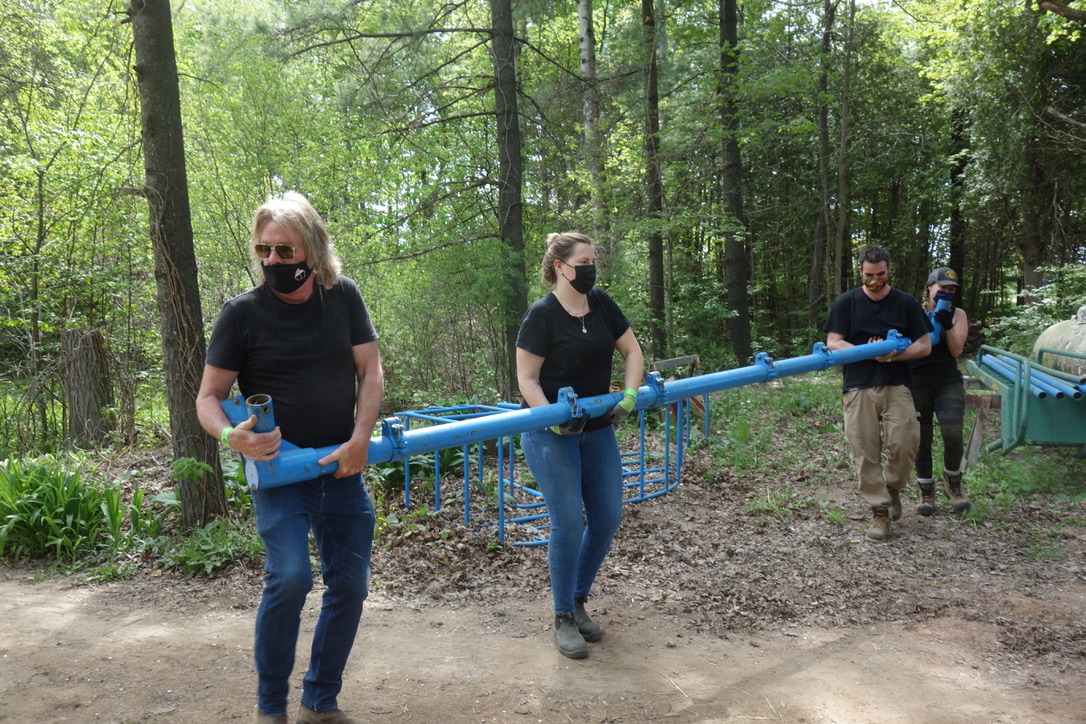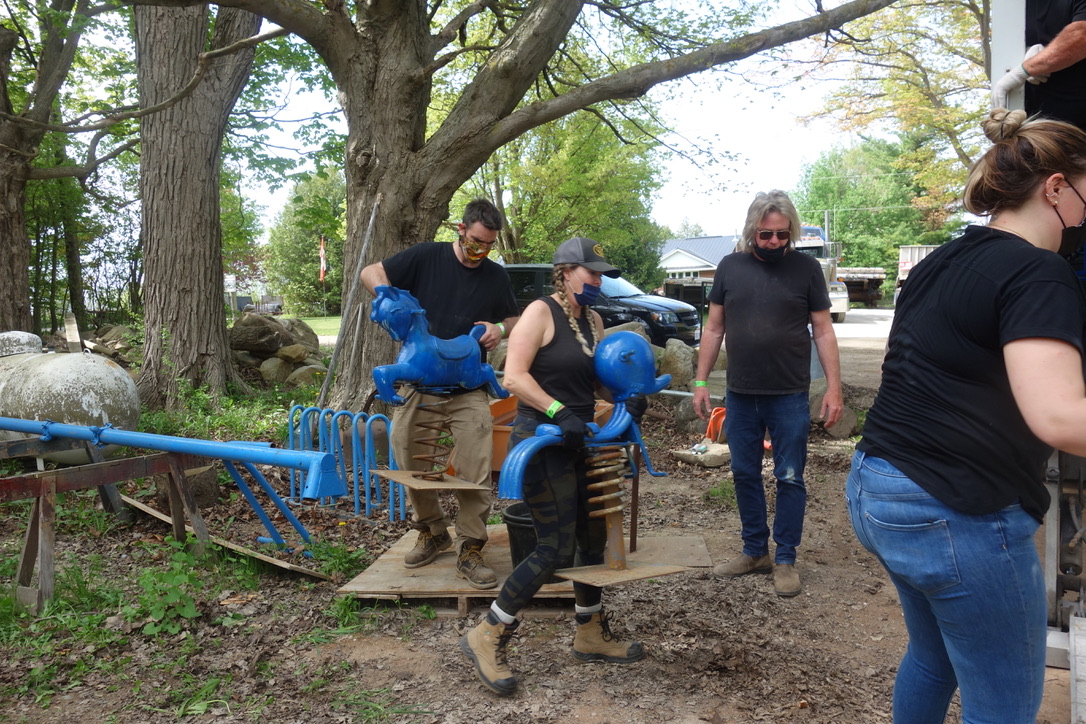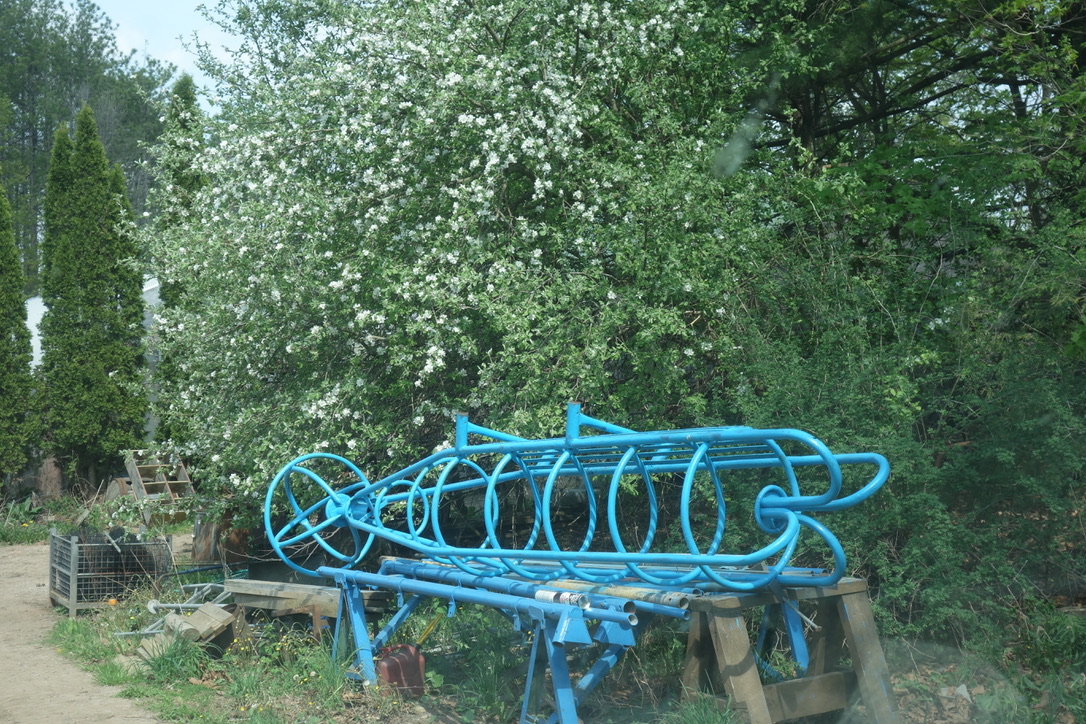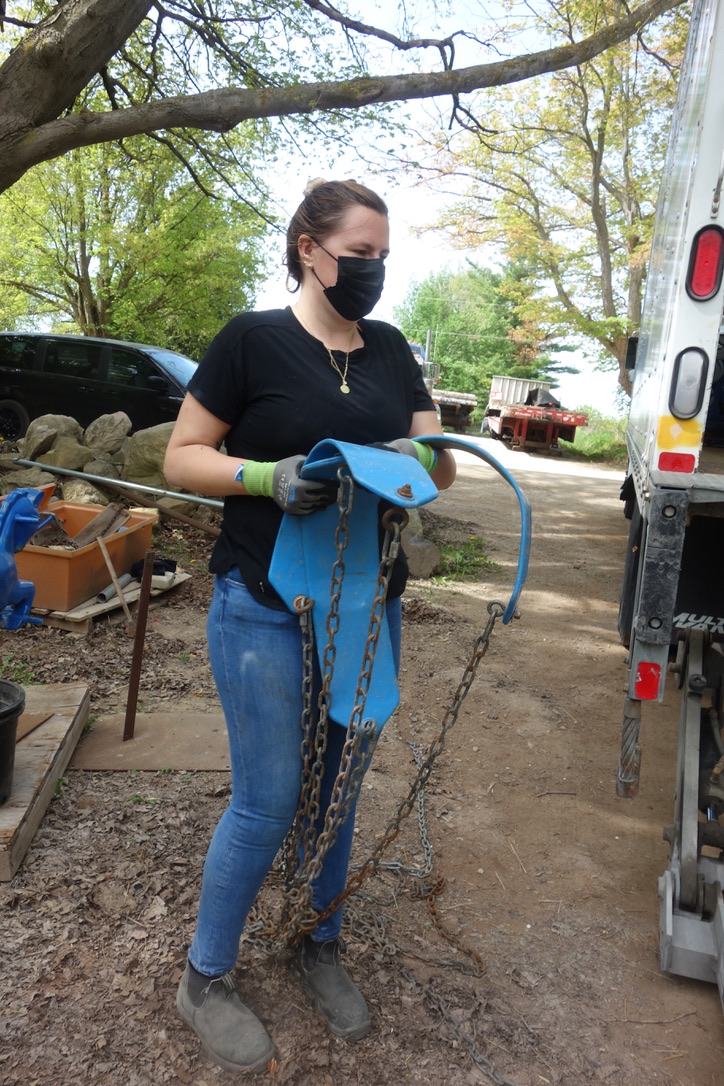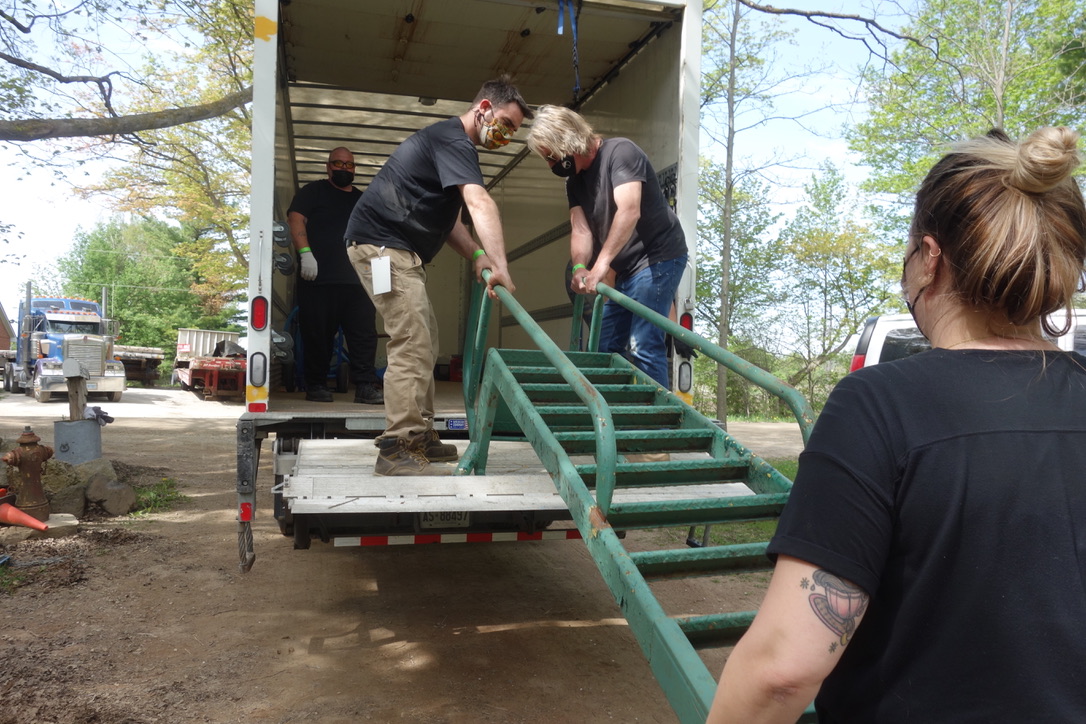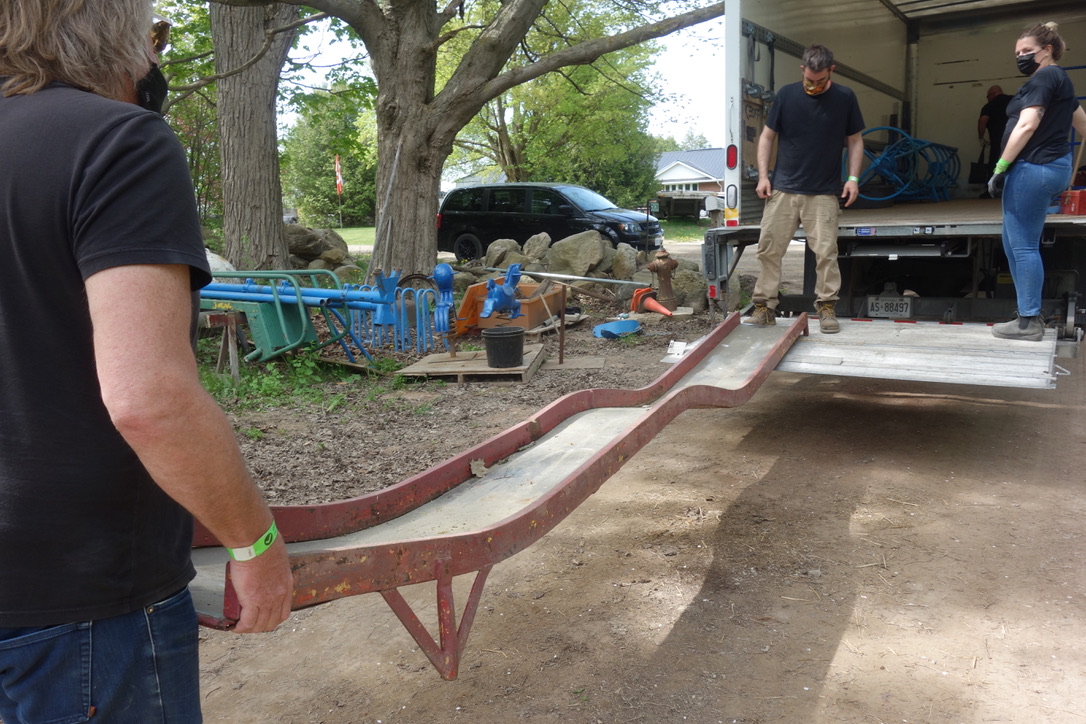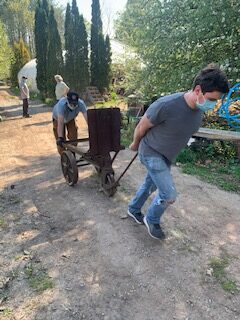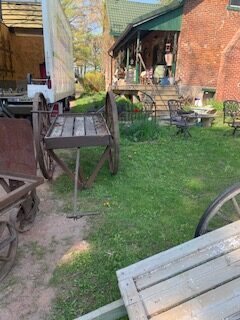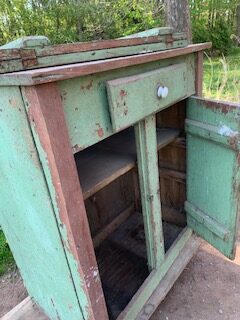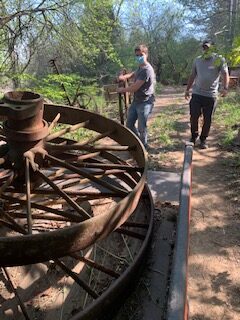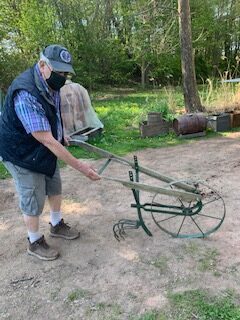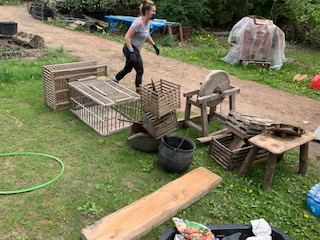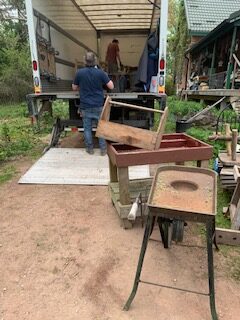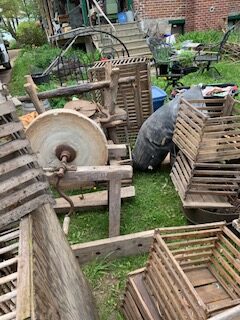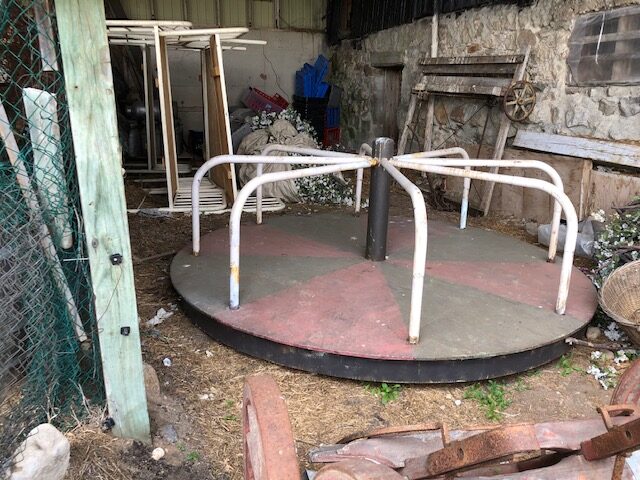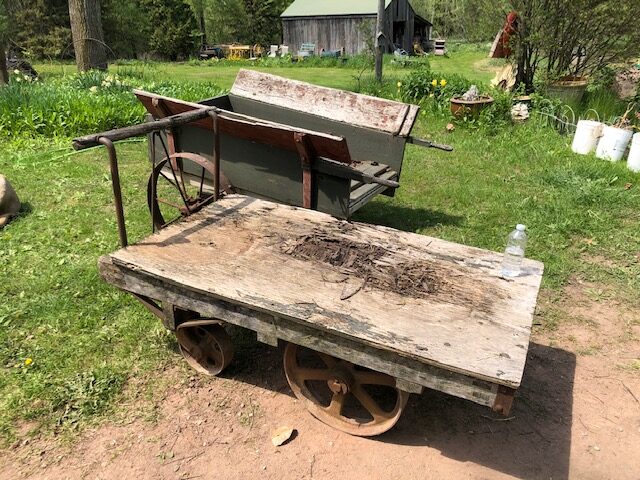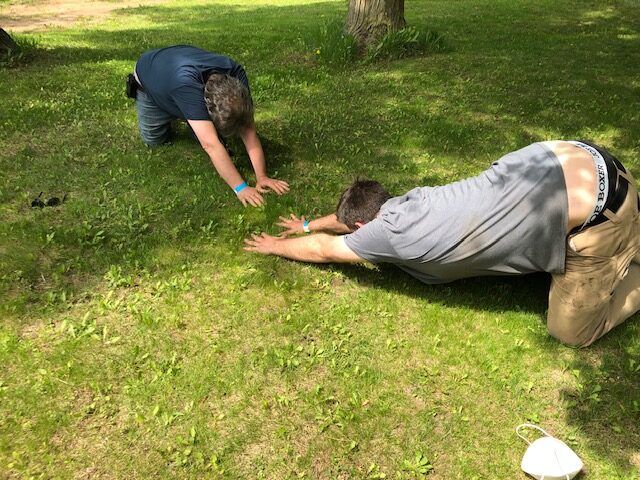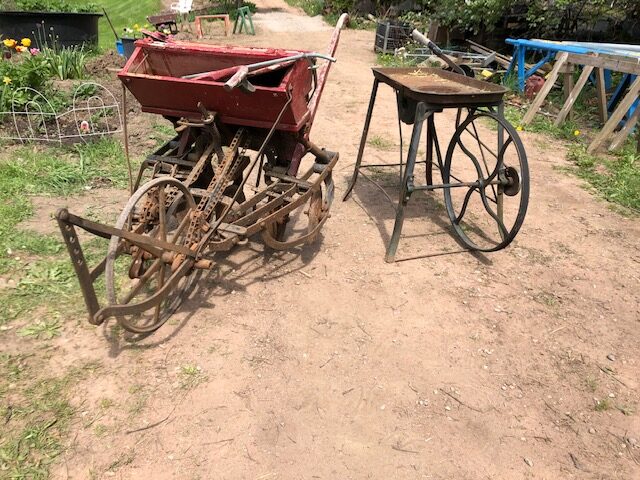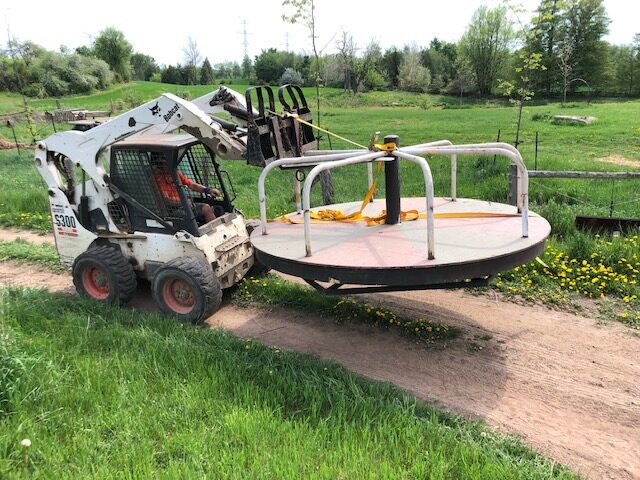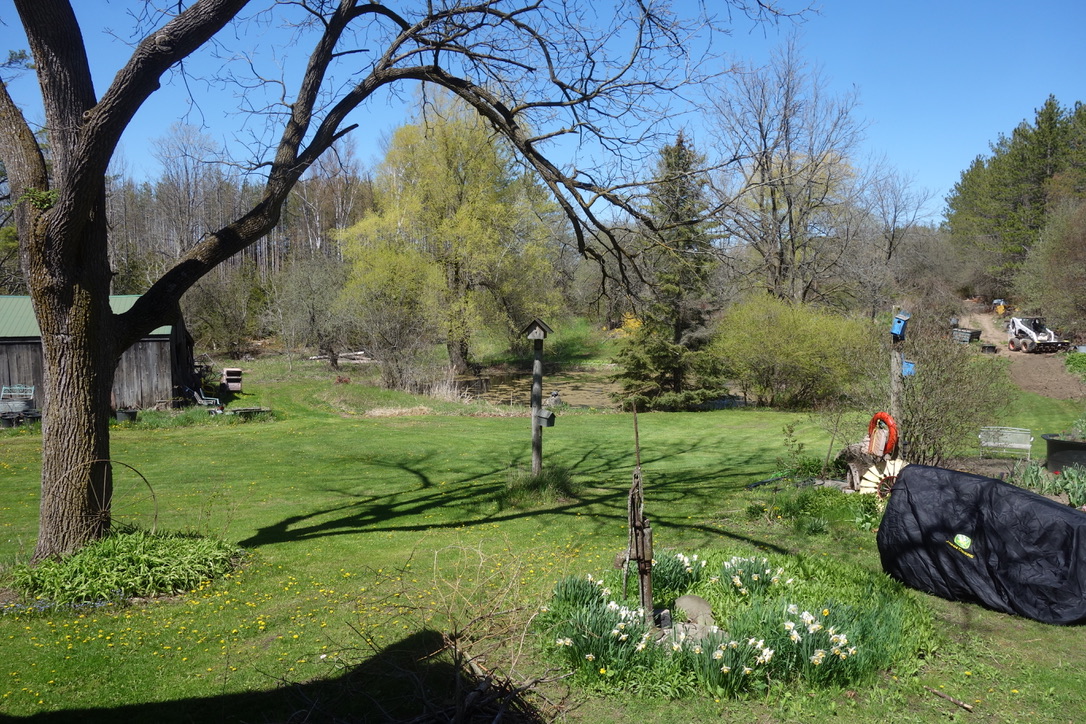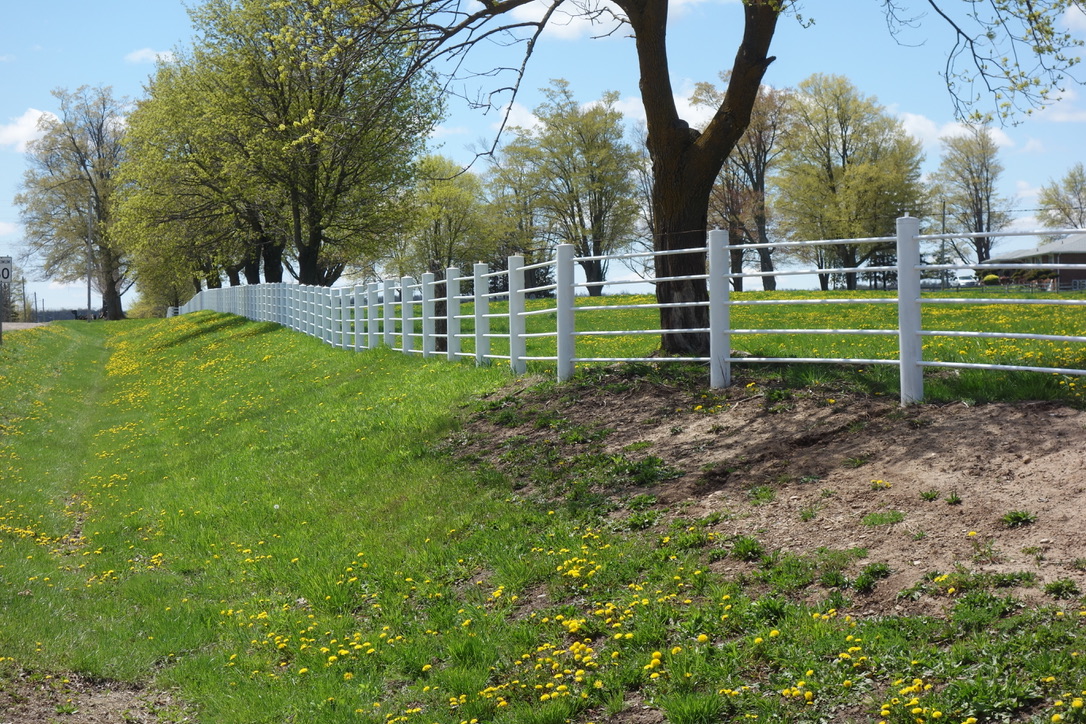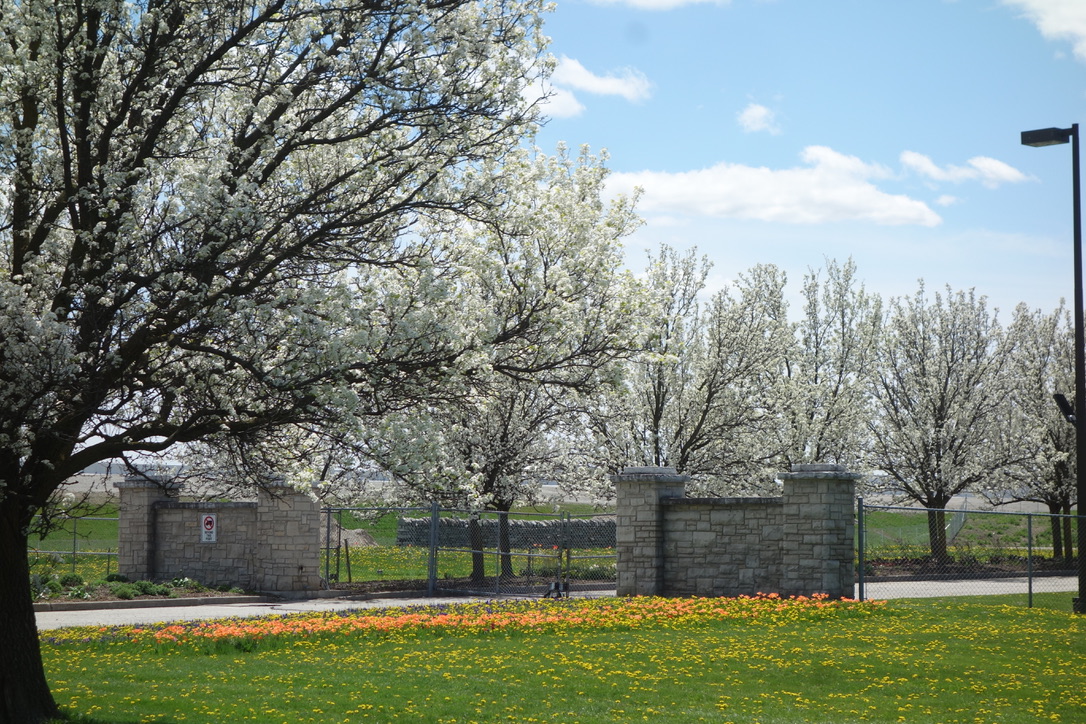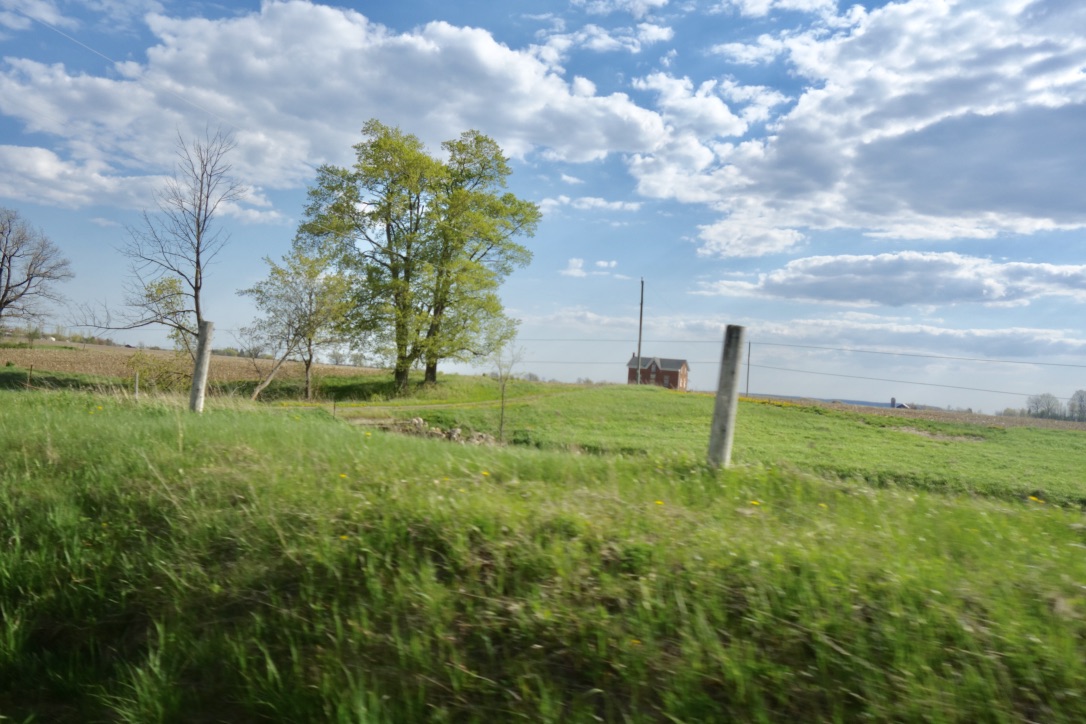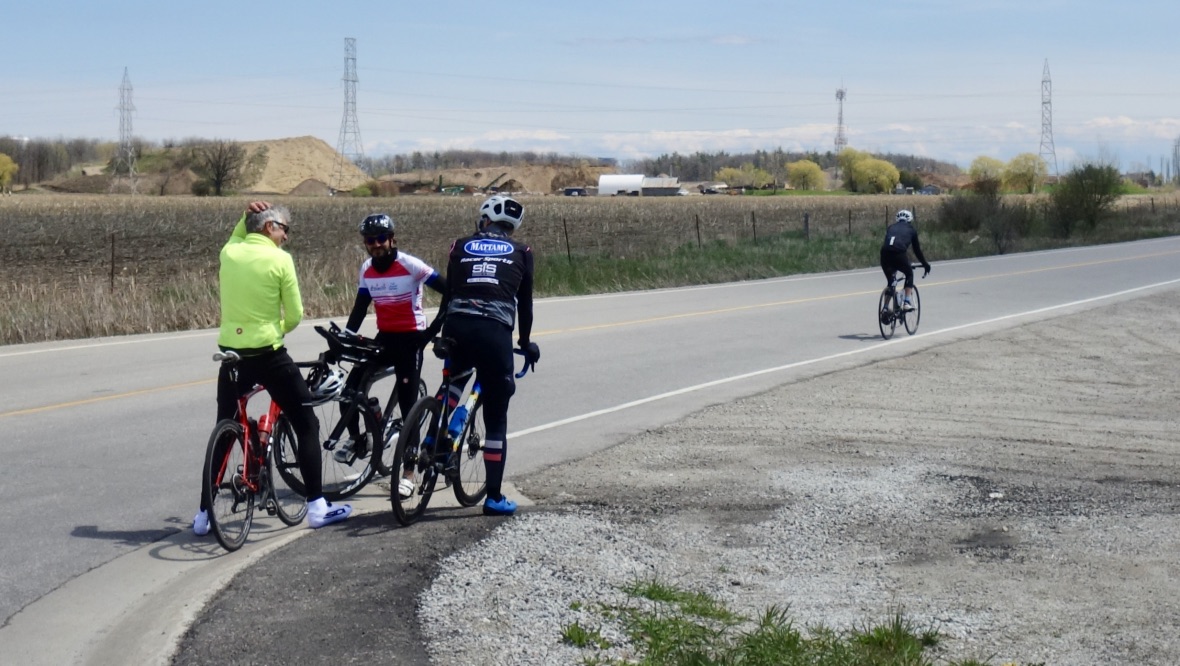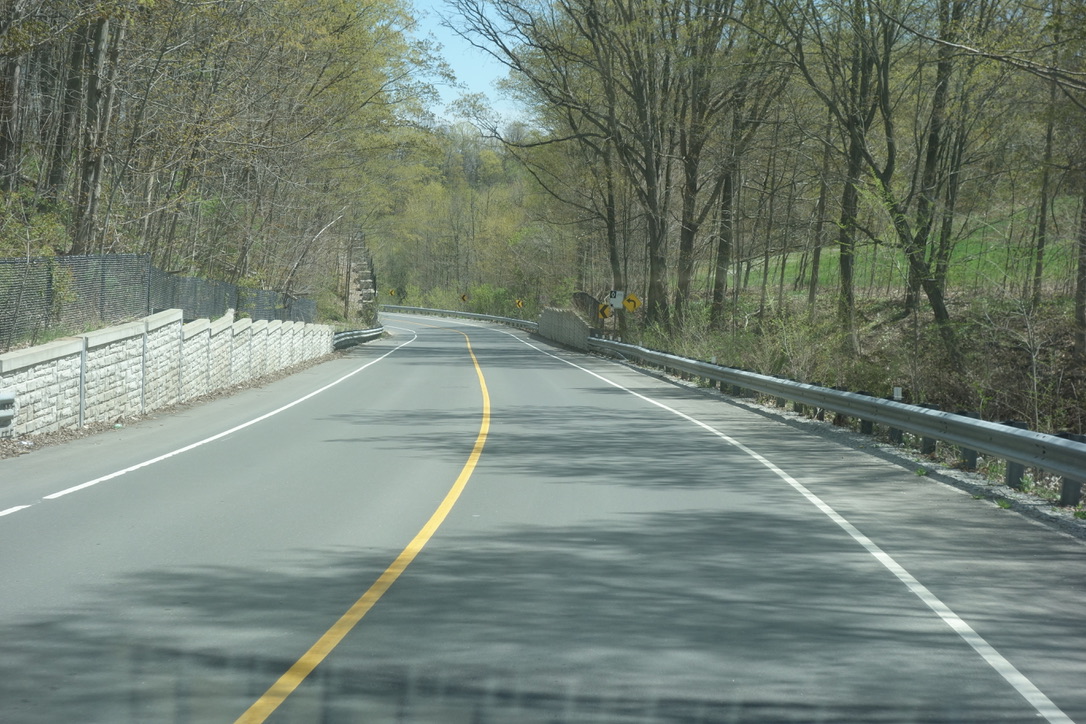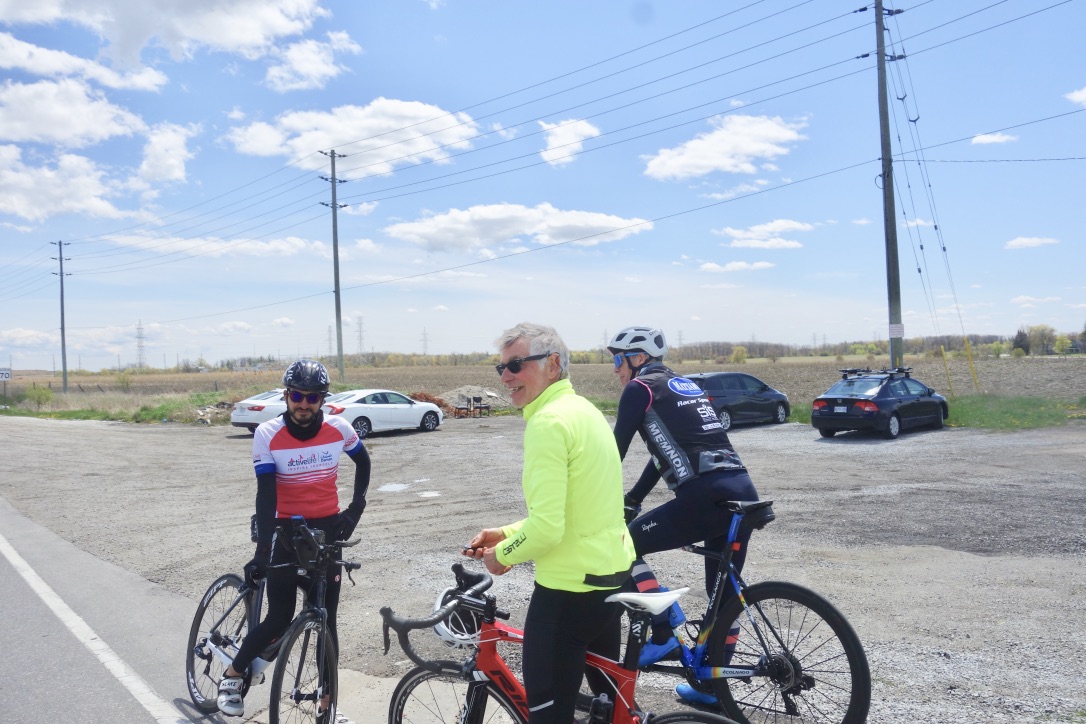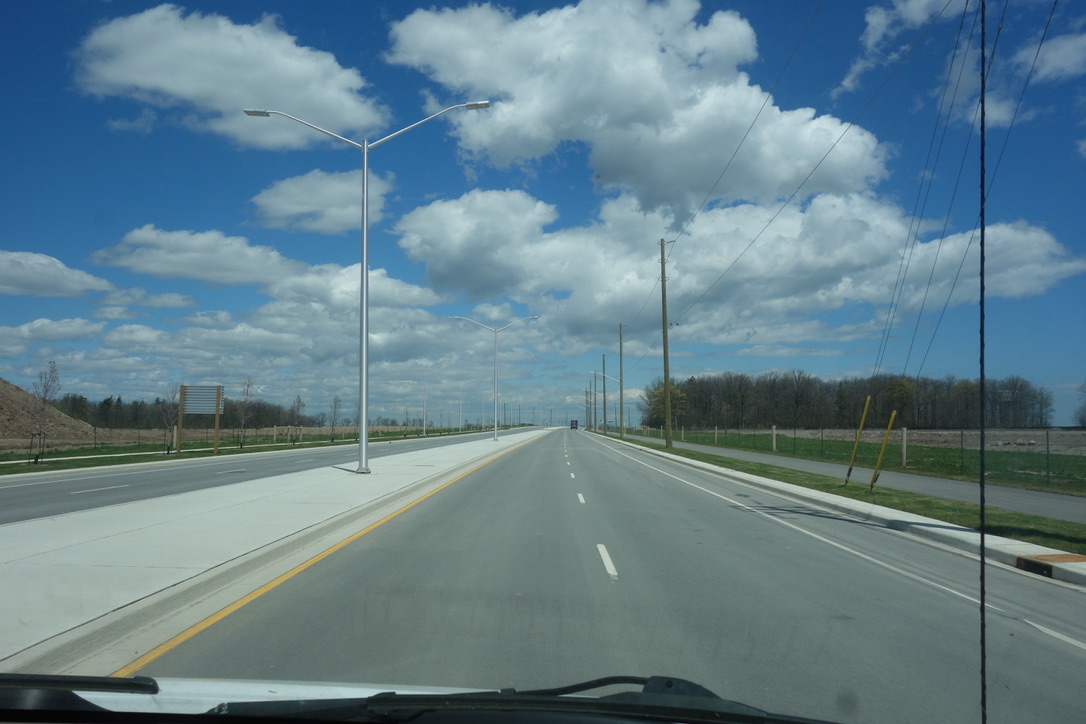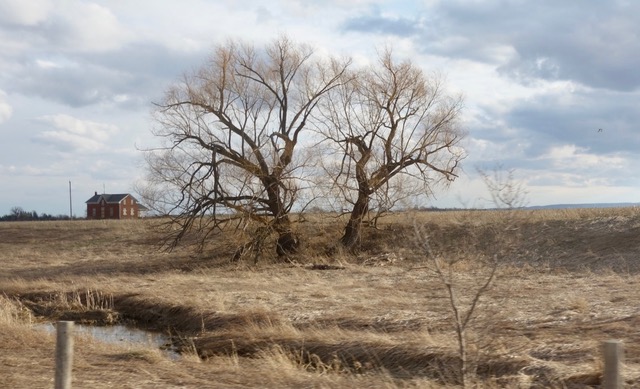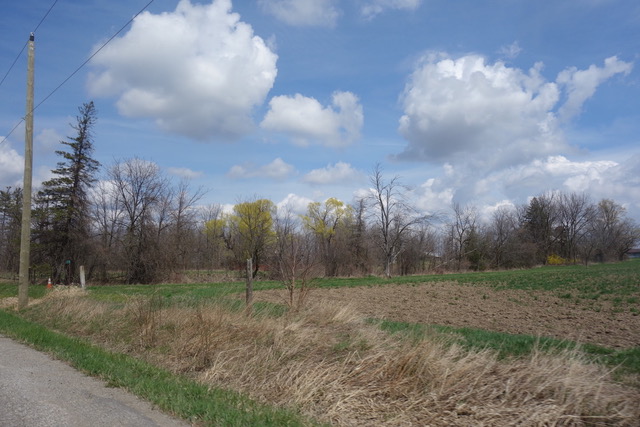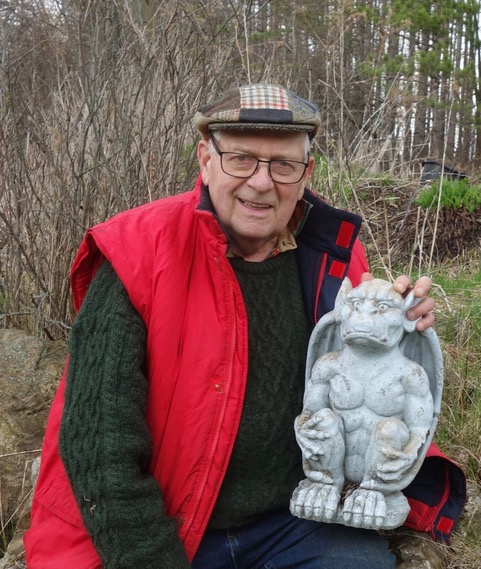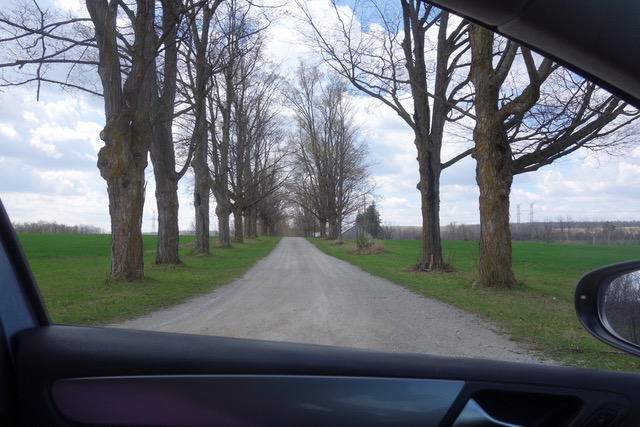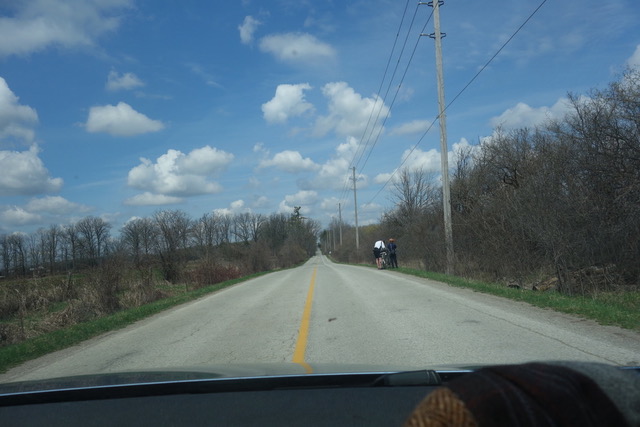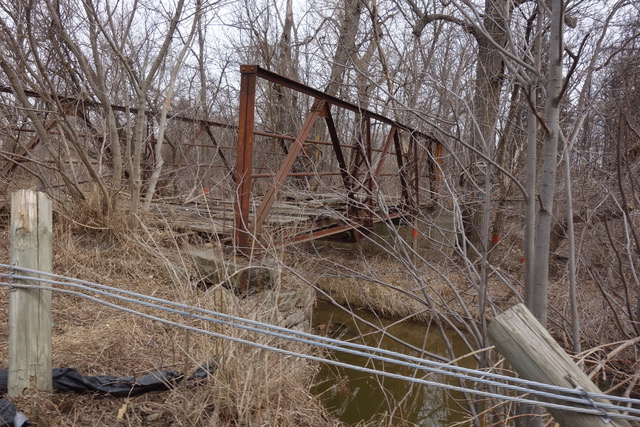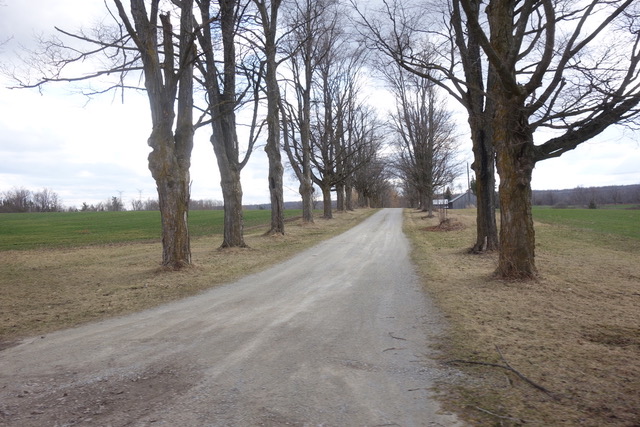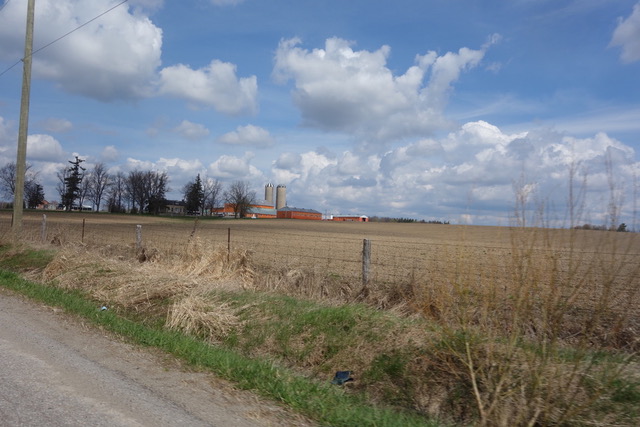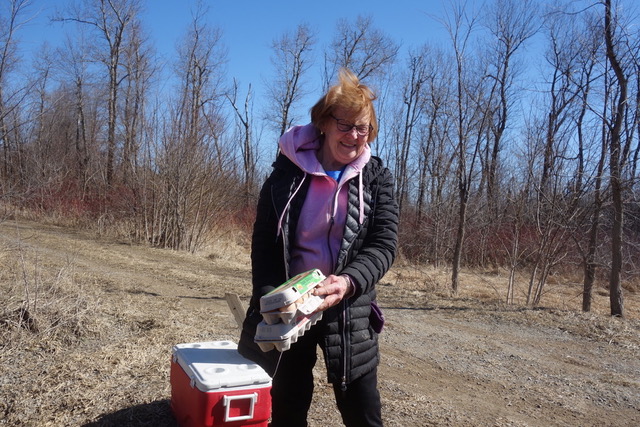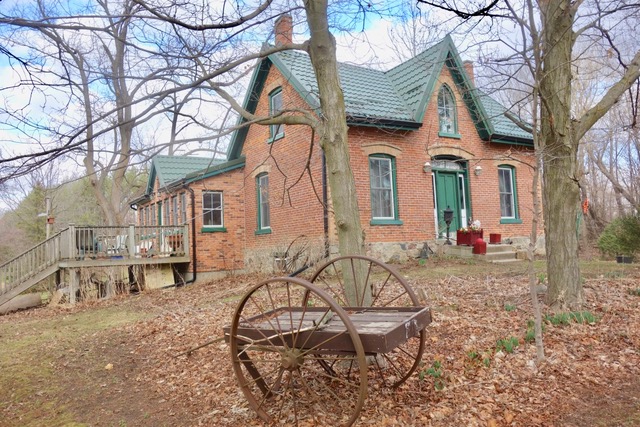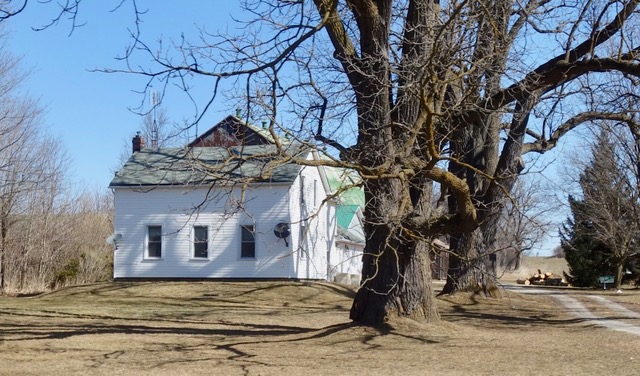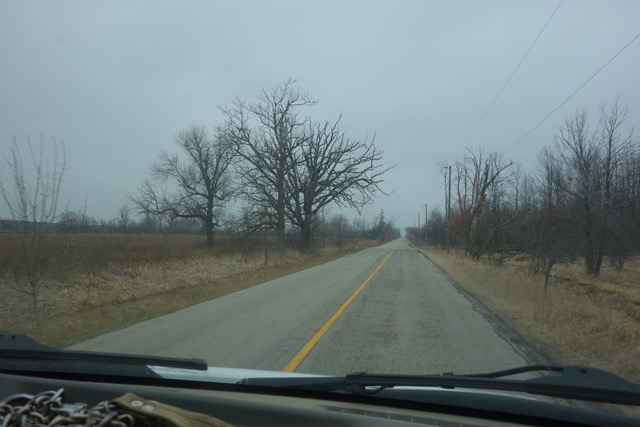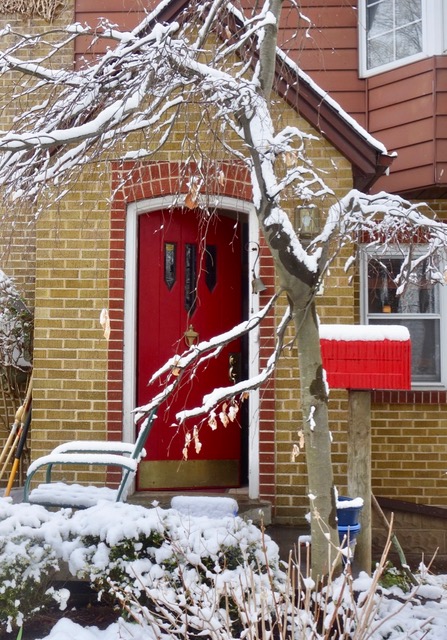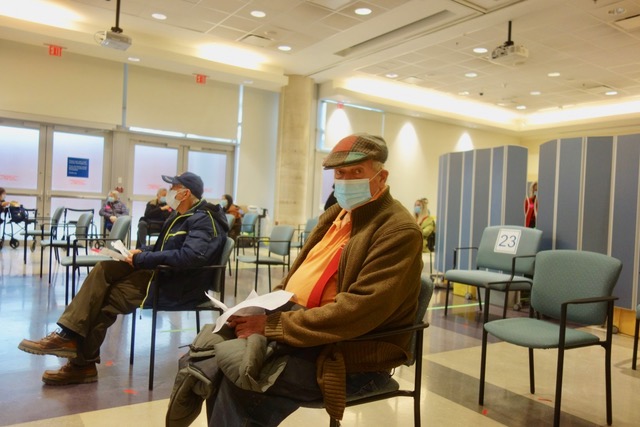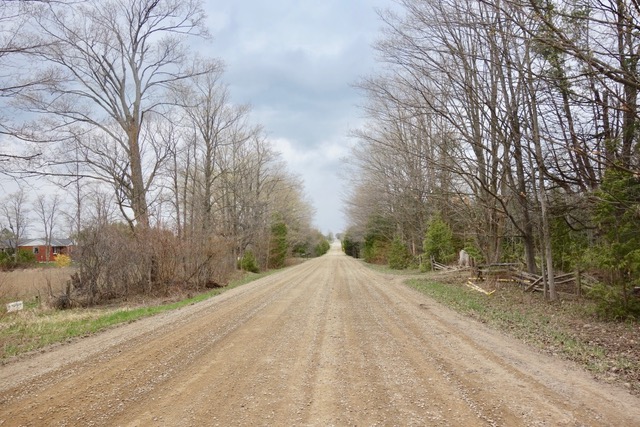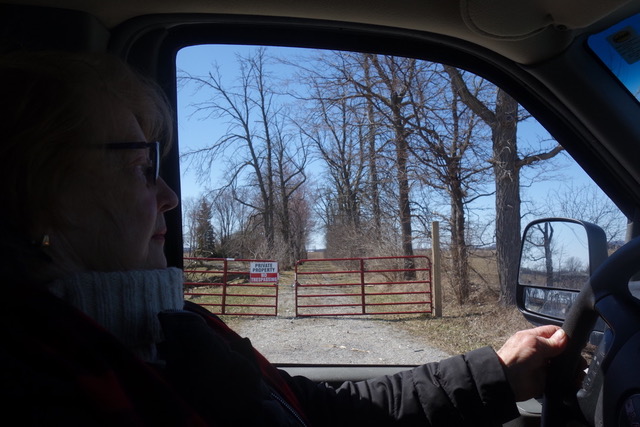Summary of minute-by-minute peregrination of the “Ghost Train”
by Walter Verstraeten
Based upon:
- “Le Train fantôme (The phantom train)” from Lokker, Claude, Des Bâtons dans les Roues, Brussels: MIM Fonds Ortelius, 1985, which is primarily based upon investigations made by Mr. Handeberg, Belgian Railway Personnel Management Inspector.
- Speech held by René Ponty onNov. 7, 1944
- Speech held one year later by René Ponty, during a commemorative service at Brussels-South Train Station
General info:
- Train mission number: 1.682508
- Supposed to leave Brussels-South Train Station on Sept. 2, 1944 at 8:30 a.m. from tracks/platforms 14 and 15.
- Trajectory planned: Brussels-South/Mechelen/Essen/The Netherlands/Germany.
- Purpose: transport of 1370 Saint-Gilles political prisoners and allied airmen to German extermination camps. Nationalities included Belgians, French, Russians, Americans, Canadians and British.
- Train under surveillance of SS-troops
The Ghost train denomination:
Lokker states that the expression “Ghost Train” has been ill-chosen as the whereabouts of the train were known at all times during its peregrination and was constantly guarded by SS surveillance units. A better name could have been “Miracle Train”.
Deportation figures for the year 1944:
Deportations from Belgiumwere executed under the command of the Reichssicherheitshaupt-amt(General Office for the Security of the Reich). The men who staged this act of infamy included Straub, who was the leader of the SIPO-SD[1] (Security Police-Security Service), Reeder, who was Miltärverwaltungschef (head of military administration), General Jungclaus, who was Head of the Gestapo inBelgium) and von Falkenhausen.
Number of people transferred to concentration camps between April and September 1944
|
|
Date/month
|
Buchenwald
|
Sachsenhausen
|
Ravensbrück
|
Vught (H)
|
Neuengamme
|
| April 16 |
|
|
|
798
|
|
| May |
1.857
|
|
|
|
|
| June |
544
|
|
193
|
|
|
| Aug 8 |
|
|
170
|
|
|
| Aug 10 |
827
|
|
|
|
|
| Aug 30 |
|
|
250
|
131
|
1.703
|
| Sep 1 |
|
|
130
|
|
|
| Sep 4 |
|
800-900
|
|
|
|
The three phases:
The Ghost Train episode can be divided up in three distinct phases:
Phase 1: The train is prevented from leaving the Brussels-South Train Station and eventually takes off for Vorst-South Train Station on Saturday, Sept. 2 at4:50 p.m.
Phase 2: The train drives to Muizen Train Station where it arrives at11:40 p.m.and on Sept. 3 at7:15 a.m.returns to Brussels- Klein-Eiland (Petit île) Train Station
Phase 3: The train arrives at Brussels-Klein Eiland (Petit île) Train Station at10:15 a.m.on Sunday, September 3, where the prisoners are released.
Brussels-South Train Station:
For ease of reading most names of stations etc. have been translated to English. In Dutch Brussels-South is called “Brussel-Zuid”, the French-speaking population of Brussels refer to this train station as the “Midi”.
The full minute-by-minute account
Phase 1
August 25 thru September 1, 1944
Both on August 25 and September 1, 1944 the Swedish ambassador, baron Knudse de Verchou, backed by the Red Cross helped by Count Berryer, asks the German ambassador, Mayr-Falkenberg, to abandon the plan to deport to Germany close to 5.000 political prisoners held in Belgian prisons. The request also includes the Jews remaining at the Mechelen Dossin Barracks awaiting transfer to the extermination camps. General Jungclaus makes promises, but keeps his definite answer in consideration. In any case he makes it clearly understood that “heavy cases” will be sent toGermanyno matter what. In spite of this contact and the vague promises made, Jungclaus orders 130 women to be deported to Ravensbrück on September 1, 1370 Saint-Gilles prisoners on September 2 and another 800-900 men from the still occupied part of Belgium on September 4 to Sachsenhausen. Only the September 2 contingency will not reach the extermination camps. This is their story.
Night of Sept 1 – Brussels South Train Station
SS detachments roll in 32 boxcars destined to haul 1.370 political prisoners held at the nearby Saint-Gilles Prison toGermany
Sept. 2 – Saturday
From 1:30 to 4:00 a.m.
The Saint-Gilles prisoners are awakened and herded together in the central court of the prison. Each prisoner is given two Red Cross parcels. To the prisoners this is the end of their dream of being liberated by the rapidly approaching allied troops.
4:00 a.m. thru 07:30 a.m.
The prisoners leave, walking between rows of machine guns. They are driven away in lorries. At Fonsny Avenue a truck holding women singing the Belgian national anthem is observed. As the lorries drive through the streets towards the train station, bits of paper snow from the lorries. They contain messages from the prisoners to their families, friends, and relatives not to lose hope and to keep the faith. Citizens pick up the bits of papers and will see to it that they get to the addressees.
Upon arrival at the platforms the prisoners are ordered inside the boxcars. They are from 85 to 105 in a boxcar. Peeking out through the cracks in the slats of the cattle wagons the prisoners can see their friends, relatives, and wives pass as they move on to the next boxcar. A smothering heat starts soon building up quite rapidly inside the cars. Assistant manager Duverger audaciously neglects the German threats and starts opening the ventilation slots, so fresh air can get into the wagons. Through these slots messages are passed in both directions. Slips of paper are thrown out and picked up by patriots walking along Avenue Fonsny that borders the train yard. Verbal messages are passed on in both directions.
7:30 a.m.
Michel Petit, the assistant train station manager, and an active member of the resistance group M.N.B., notices that SS soldiers take up positions along tracks 14 and 15. He estimates there are between 150 and 175 SS-men in all on the platforms. A civilian has already informed him around6a.m.that the prison of Saint-Gilles is in the process of being evacuated. Michel Petit gives covert instructions to sabotage the locomotive requested for this action. He immediately sends out a message to the Laken resistance group, asking them to pass on the warning to all other resistance groups covering the Brussels-Antwerp railway trajectory. Informed that a German hospital train is being diverted via Denderleeuw to the Brussels-South train station, Michel Petit, assisted by a staff member, leaves his office to go and fix a dynamite charge onto rail switch no. 67.
07:40 a.m.
The Train Station Manager, Léon Petit, passes on the same information as his namesake Michel. Within a short period of time a resistance man shows up in Léon’s office, pledging the station manager to use all means at his disposal to keep the train from leaving, pending a possible positive answer from General Jungclaus. Petit assures the man that will be no problem, but requests him to go and find the train depot manager, Technical Inspector Piette, and ask him to slow down the delivery of the requested locomotive. No sooner is he informed than Piette passes on the instruction to engine driver Roelants. Without informing the Germans all locomotives dispersed over the marshalling yard are called to the railway depot.
Léon Petit’s office is earmarked as the central headquarters for the whole operation. From here a well-conceived priority sabotage plan will be executed in the course of the day. The actors primarily will be the railroad personnel and staff, aided by resistance people. Soon many resistance members, including the personal representative of Général De Gaulle, are coming and going. A violent intervention is considered, but dropped as it is realized that any such action will invariably entail carnage. The word is spread that the Germans are to be constantly and deliberately misinformed on the total of locomotives available.
As soon as the Fahrtnummer 1.682.508 (convoy number) for the prison train is communicated to Léon Petit, it is covertly passed on to the railway depot workshop. Now the sabotage acts can be accurately pinpointed onto the exact train engines. Now the scenario can be laid down in detail. Spare parts will get broken. Drivers can make themselves sparse or can disappear altogether or they can get hurt or ill. Unnecessary additional controls can be inserted in the day’s schedule to slow down the whole process. Locomotives can show up at the wrong places and “unfortunate” misinterpretations will certainly yield a lot of problems all over the marshalling yard. Imagination will be their only limit.
09.15 a.m.
A locomotive is requested from the depot. The depot reports that specific locomotive, a type 33, has broken down. As a matter of fact rendering the lubrication piping unusable has sabotaged locomotive no. 3302. Locomotive no. 1202 is now assigned, but it turns out to be suffering from a broken Westinghouse pump. The driver Georges reports sick and is replaced by Vanderveken. It becomes obvious to the Germans that the Belgians are deliberately slowing down the repair jobs. They order German mechanics to take over and the engine is soon fixed. However, as the locomotive leaves the depot it is sent off in the wrong direction and ends up in a totally different place somewhere on the marshalling yard. Atnoonit will be reported to still be there.
12:00 noon
A locomotive towing a German freight train pulls in at Brussels-South. It is reassigned to the prisoner’s train. However, the locomotive is ‘inadvertently’ diverted to the Schaarbeek marshalling yard at the other end ofBrussels. Apparently there has been some misunderstanding at the carousel where trains can be sent off in different directions on different tracks.
2:00 p.m.
Driver Roelants requests to be replaced, as his shift has been completed. He is replaced by Delorme, who claims he still has to go and collect his wages (it is Saturday). He disappears from the depot and as it turns out stays away for two hours.
2:15 p.m.
Georges’ replacement, Vanderveken, drags his feet as long as possible. Seeing this act cannot be kept up indefinitely, he enacts his tumbling from a locomotive and fakes to be wounded.
3:15 p.m.
The Germans are completely at a loss and send an armed guard to the locomotive depot and start looking for Delorme. Eventually Louis Verheggen and Léon Pochet are ordered to drive the locomotive. Three SS-guards move into the engine house and take up positions behind the two engineers, their arms trained at their backs. They will remain there until the morning of September 3 at10:15 a.m., an 18-hour constant vigil as to the slightest movements of the drivers. In spite of that Verheggen and Pochet will manage to continue sabotaging the advance of the train during the whole trajectory.
3:30 p.m.
Locomotive 1202 leaves the depot.
4:15 p.m.
Locomotive 1202 is attached to the row of 32 boxcars. The train is guarded by several German officers and between 150-175 SS-soldiers. A section of machine-guns has been mounted onto the anti-aircraft wagon. They are installed in such manner as to be able to direct their fire along both flanks of the train. Verheggen demands a brake test to be executed, in spite of the German workshop leader assuring him that this as already been done. Verheggen informs assistant manager Deweiger that he’ll do anything in his power to keep the train from passing the border. Deweiger runs along the train shouting the message to all prisoners as he passes each boxcar. In the meantime he picks up all little bits of paper thrown out of the boxcars (via the ventilation slots) by the prisoners. These little bits of paper contain messages to their families and relatives. Deweiger takes a great risk as the patrolling guards normally should shoot him for doing this, but somehow it doesn’t happen. Assistant-chief Decoster addresses Verheggen to sign a work form. In reality he passes on a message that the French Resistance is counting on him and trusts him.
Departure of the train is now set at4:50 p.m.
Leaving the station, Verheggen notices that the signaller has set the all-clear sign for slow traffic to Ruisbroek. Profiting from the ignorance of the three guards he enters the marshalling yard on this wrong railtrack. The local assistant station manager stops him and after some discussion he is redirected toVorst. At Vorst-South Train Station, Vanderstricht, the assistant station manager, has been informed of the oncoming prisoner train, which is normally due to pass thru his yard at 4:55 p.m. He has put his signals in such way as to force a 72-wagon German freight train coming fromHalleand on its way to Brussels-South viaVorstonto the main track, thus blocking the Verheggen locomotive. Logically Vanderstricht manoeuvres the Ghost train locomotive onto a dead-end sidetrack. Vanderstricht now starts concentrating on the 72-wagon train on the main track. In order to move it away, the locomotive needs to be brought from the head to the back of the row of wagons. Vanderstricht eventually splits up in the convoy in two parts. Discussions with the Germans leads to the decision to send the locomotive back on the reverse track. In the process an anti-aircraft wagon is attached to the train atVorst. Verheggen takes the opportunity to replenish his water supply.
Phase 2
September 2, 1944 – Saturday
5:45 p.m.
The Ghost Train arrives at the Schaarbeek railway marshalling yard. In spite of the sign being in the “safe”-position, Verheggen brakes to a stop and intends to leave the engine’s cabin pretending to go and fetch a yard pilot. He is forced back inside the cabin and ordered to leave immediately. One of the guards assures him: ”Maschine kaput, du kaput!” (Locomotive dead, you dead!).
At Vilvoorde the signs are in the “stop”-position. Verheggen secretly congratulates the clever signaller. It allows him to halt his train for a long period of time. The guards however soon get impatient and suspicious and order him to drive on in spite of the signs.
Driving into the Mechelen marshalling yard via Eppegem at around11 p.m., the signs are in “stop”-position there as well. This however is a normal situation, as the sign installation has been out of order since the latest allied bombing raid on Mechelen. The engineer needs to descend and phone to find out whether he can actually pass the signs. The guards again make a lot of fuss, but realizing Verheggen is in the right, he is given permission to descend from the cabin and is escorted by two guards to the nearest phone. One guard stays with Pochet. Permission to pass the signs is obtained and the journey continues.
The engineers Verheggen and Pochet keep the vapour release activated the whole time, even when the engine is not moving. This absolutely unnecessary manoeuvre, unobserved by the three SS-guards, causes extreme loss of water. Verheggen and Pochet only raise the question of a fill-up of water as they came to Mechelen, where they know the water supply cannot be replenished due to severe damage caused to the water conduits in the course of the latest allied bombing of the Mechelen train yard. This causes the train to be diverted to the overcrowded Muizen Train Station where the nearest water replenishment tanks are available.
11:40 p.m.
The Ghost train pulls in at Muizen Train Station. The train is not given permission to leave. Shots are heard around 0:15 a.m. The person responsible for the German train eventually shows up around5.30 p.m.and orders the train to return to Mechelen.
September 3, 1944 – Sunday
05:30 a.m.
The Ghost train leaves Muizen. Approaching Mechelen the wheels of the locomotive start slipping as the train takes a curb. The malfunctioning sand distributors cause the slipping. Verheggen calls in at the nearest phone and requests a locomotive be sent to pull his convoy away. A Type I locomotive is available and will be sent ASAP. Its driver is Gerardy. Verheggen makes certain the man at the other side is well informed of the contents of his train and its destination.
Returning to his engine he gets into a discussion with the SS-soldiers manning the anti-aircraft boxcar, which has shifted position from last boxcar atVorst, to first boxcar behind the locomotive at Muizen. They demand their boxcar be repositioned in the back of the train. Verheggen plans to leave them behind. He has informed Pochet of his intentions and plan. As soon as he has disconnected the AA-car, he will not hook it on again and leave forBrusselswithout it. That is the reason why the AA-boxcar was missing when the train pulled in at Klein-Eiland.
10:15 a.m.
The Ghost train arrives at Klein-Eiland Train Station. The Germans and the (Belgian) collaborators immediately claim Gerardy and his locomotive. In the face of the advance of the allies towardsBrussels, all Germans and collaborators have now reached the point of sheer panic and their only aim is to grab any available transport to make sure they can escape toGermany. Gerardy’s engine is hooked up to a German train and he himself is forced with a gun at point blank to pull the train out. Later on he and his stoker will manage to flee from the engine in the Mechelen area.
Verheggen’s locomotive having been detached from the train, the driver decides to make his escape. He descends from his engine and starts inspecting the locomotive, walking around it. One guard stays behind holding a rifle to Pochet’s back. The two guards have left. As soon as Verheggen is out of the German’s sight he makes a dash for it and can get away from the marshalling yard unscathed. Pochet decides to let the fire die out in the engine and starts taking actions to that effect.
Phase 3:
September 3, 1944 – Sunday
09:10 a.m.
Although the Brussels-South personnel have decided to follow the example of the other railway yards and abandon the train stations leaving the Germans to their own problems, they return to their posts as soon as they are informed by phone from Brussels-West that a prisoner train is approaching Klein-Eiland.
The train commander, unaware of Jungclaus’ decision, decidedly demands another locomotive to be hooked up to his train. A troop train commander has already confiscated locomotive 109. For the other machine, locomotive 1202, there is no driver available, Verheggen having made a dash for it. Also by this time stoker Pochet has managed to kill the fire in the engine. One locomotive is reserved for a Red Cross train. All of sudden it appears several locomotives have been sent off to Schaarbeek without convoys. All signs being held on “safe”, approaching trains just pass the Klein-Eiland Station without stopping. Apparently the Klein-Eiland railway people have taken all the right measures to make it impossible for the prisoner train to leave the station again.
10:30 a.m.
Baron Knudse de Verchou, proconsul ofSweden, Mr. Miney, consul ofSwitzerlandand Mr. Lieckendael, Director of Public Safety are called to the office of the German Ambassador Mayr-Falkenbergh who informs them officially of Jungclaus’ orders to release the prisoners and that the prisoner train is on its way back. The delegation immediately departs for the Klein-Eiland Train Station.
10:45 a.m.
Dr. Van Dooren whose wife is one of the prisoners in the train, starts negotiations with the German Klein-Eiland railway commander. The doctor arrives with Mr. Roberte of the Red Cross. Roberte has been informed at6 a.m.by the German ambassador that the train had been ordered back and that all prisoners were to return to their cells at Saint-Gilles prison. Roberte is determined to not let the prisoners return to prison and asks Van Dooren to initiate talks with the German commandant.
12:30 p.m.
The commandant himself being in the dark on any specific orders, lets himself be convinced and orders the prisoners to be released from the boxcars. He however decides that the boxcar containing the allied airmen will not be opened and that the prisoners inside that specific boxcar will be stay in as PoWs. Shortly after the liberation of the 1.370 prisoners Jungclaus’ orders to liberate the prisoners reach Klein-Eiland station.
Research and text: Walter Verstraeten, July 2004.
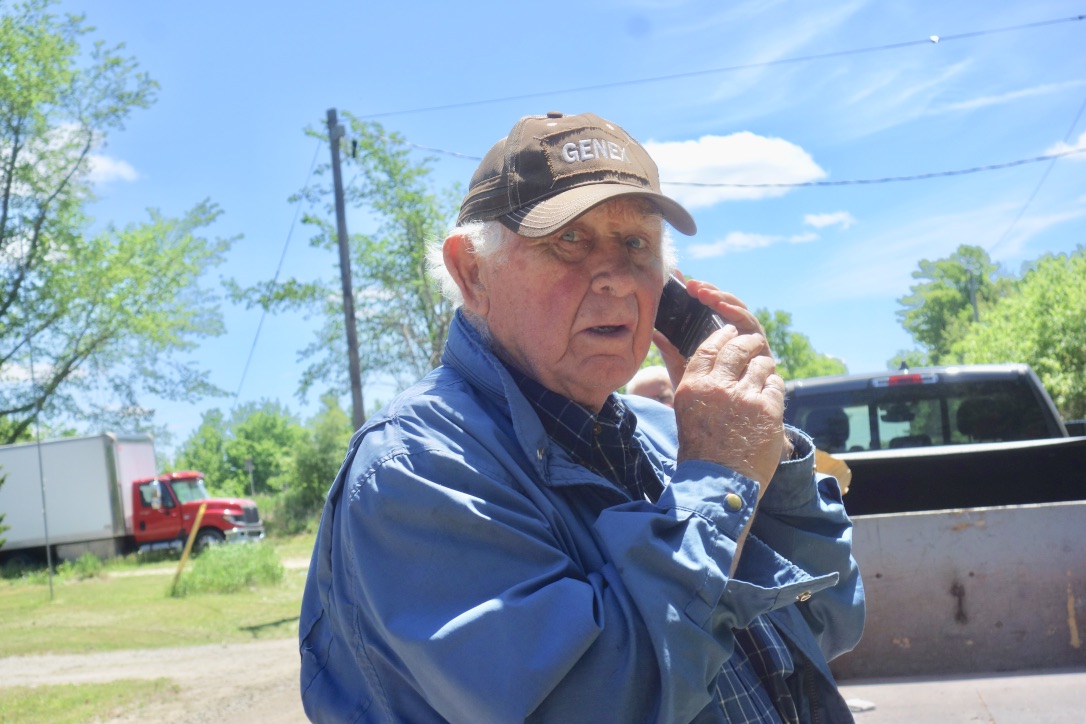


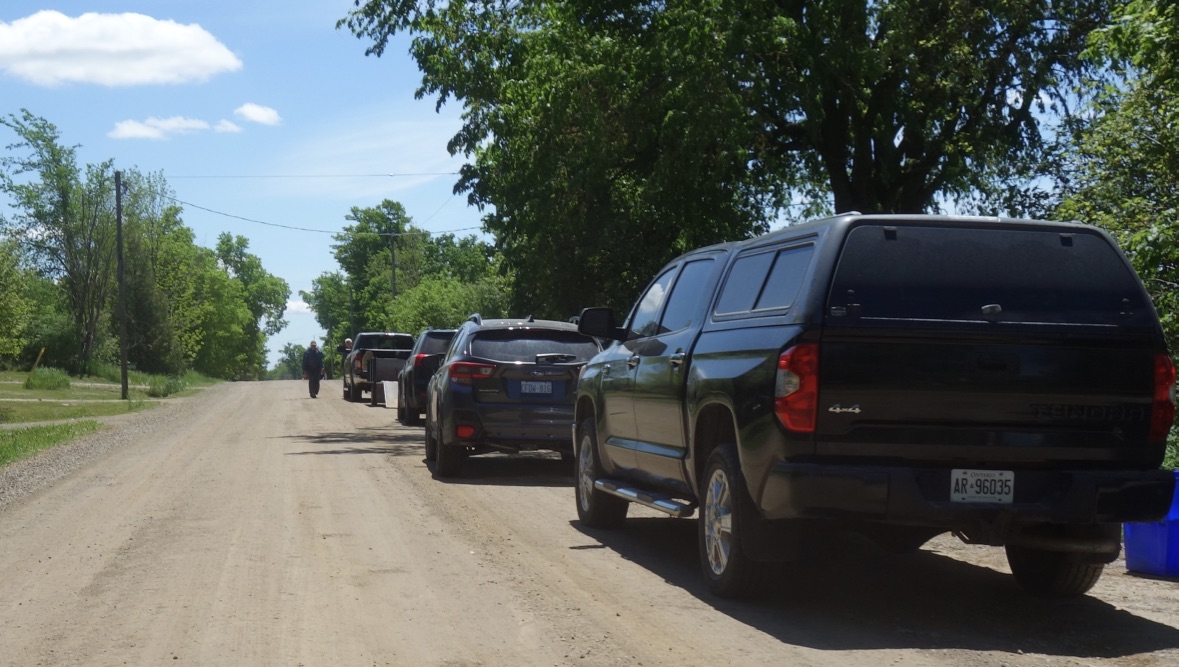


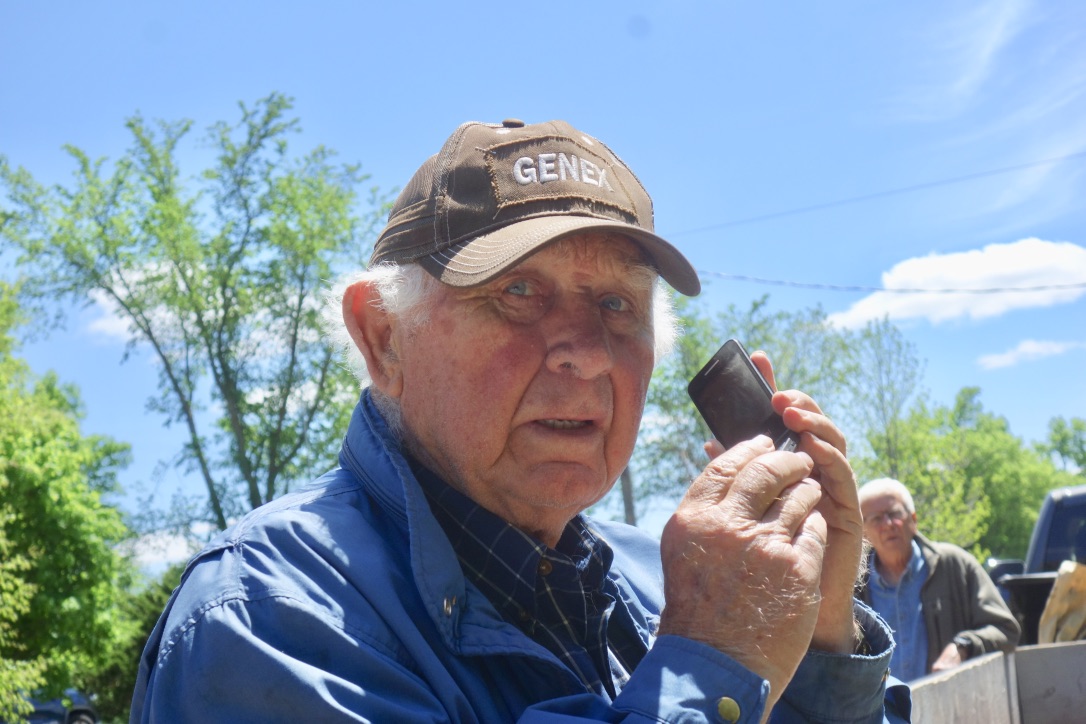
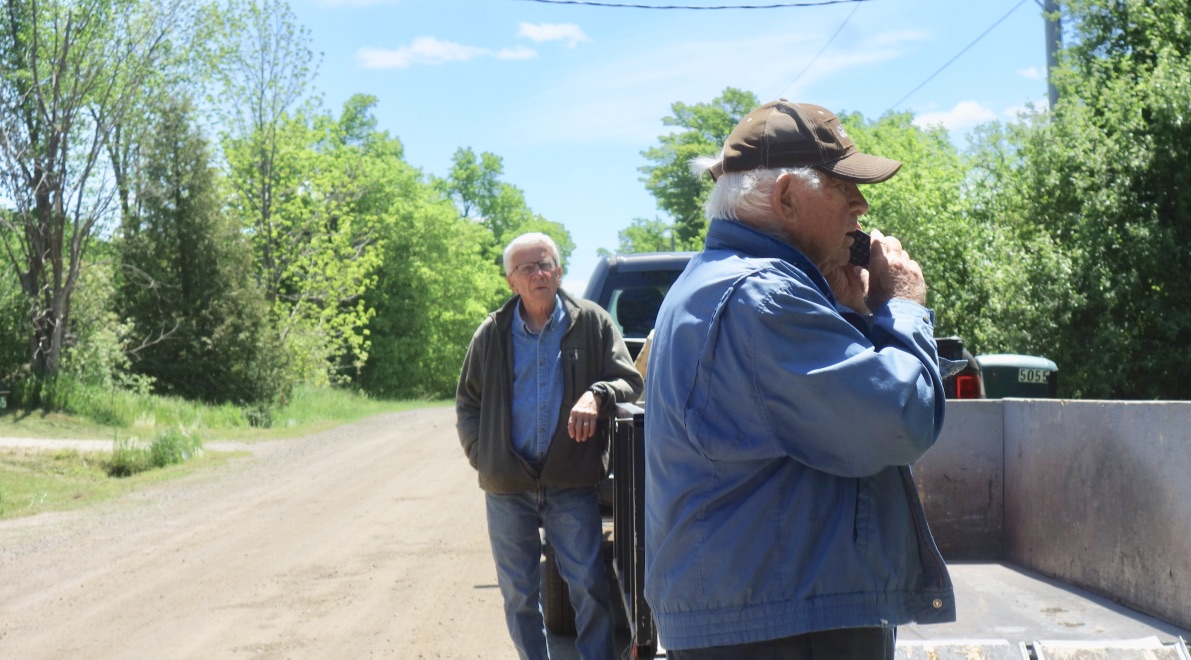


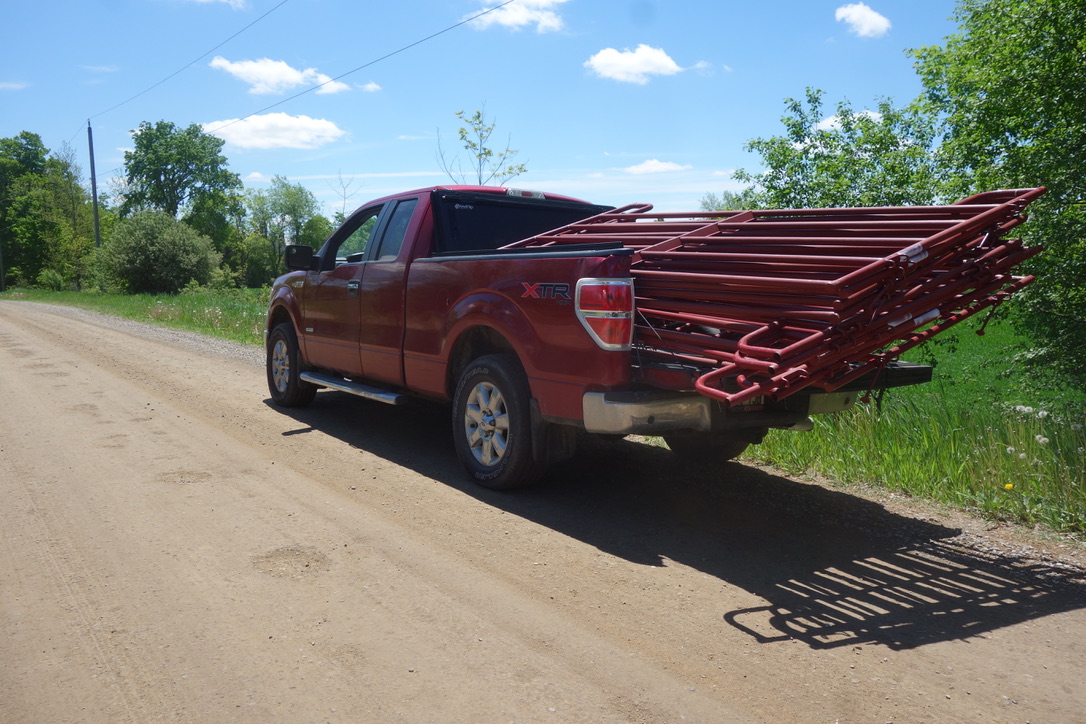







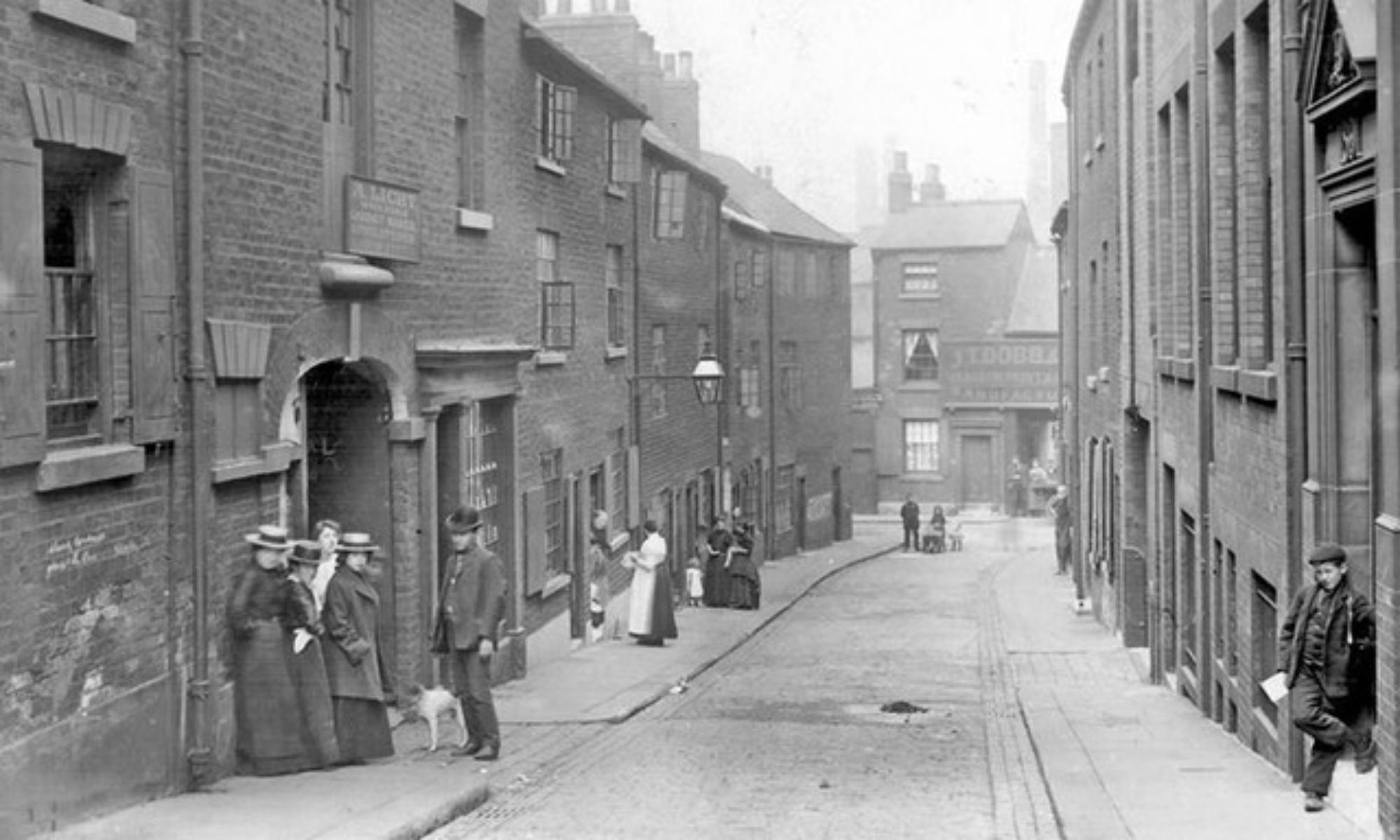

























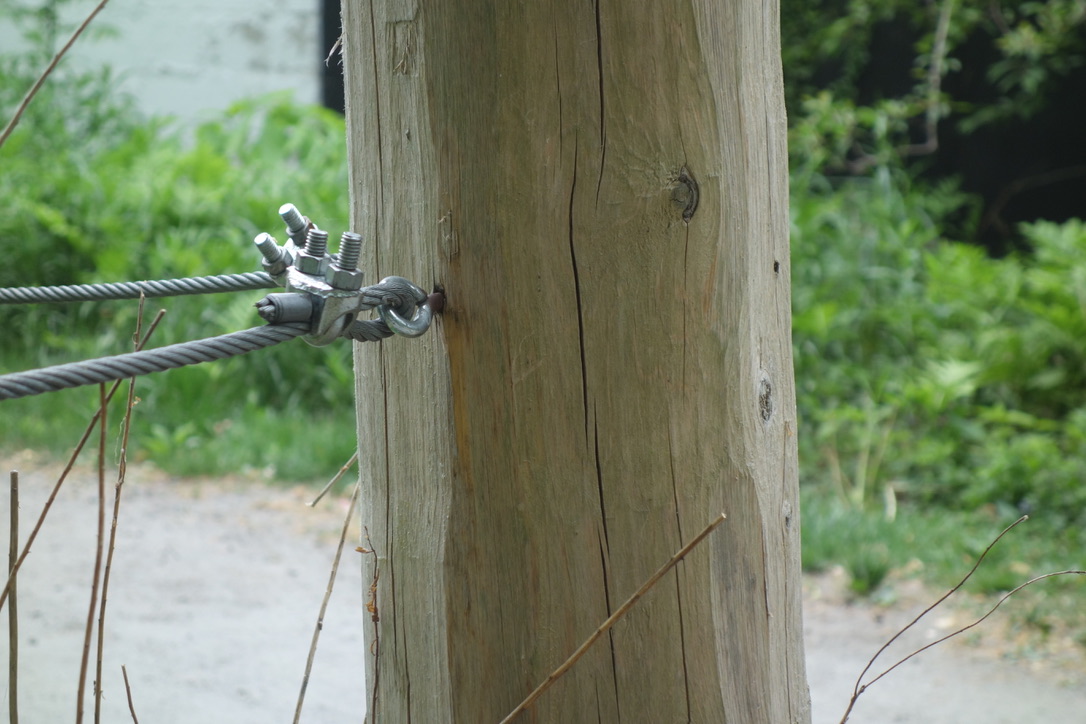















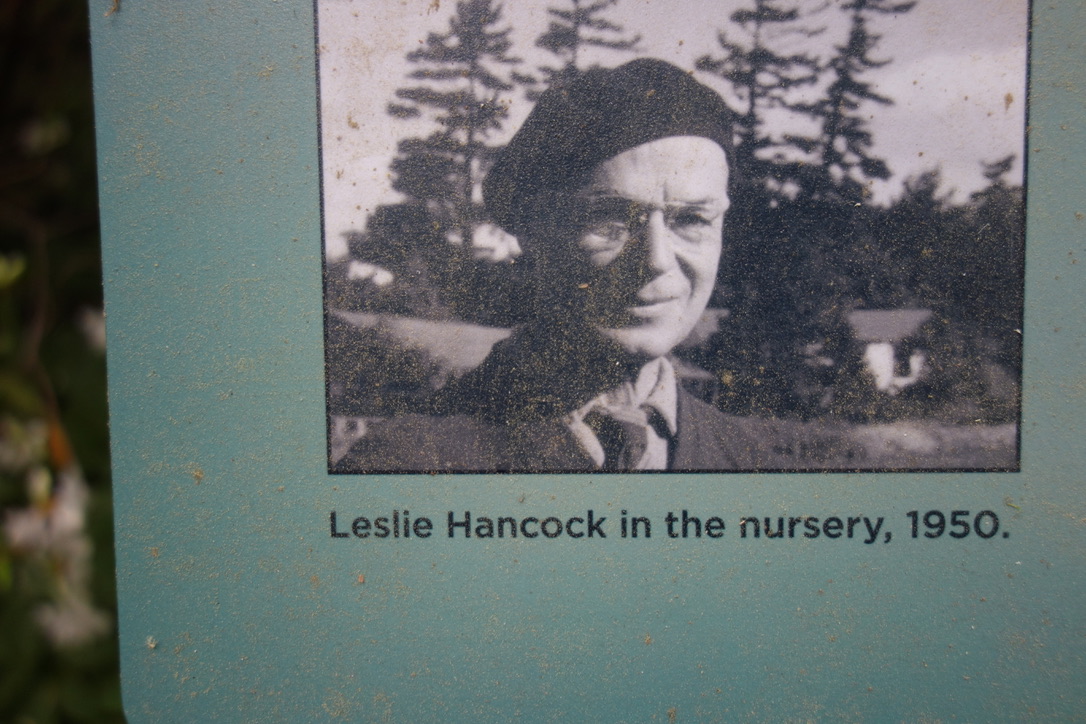





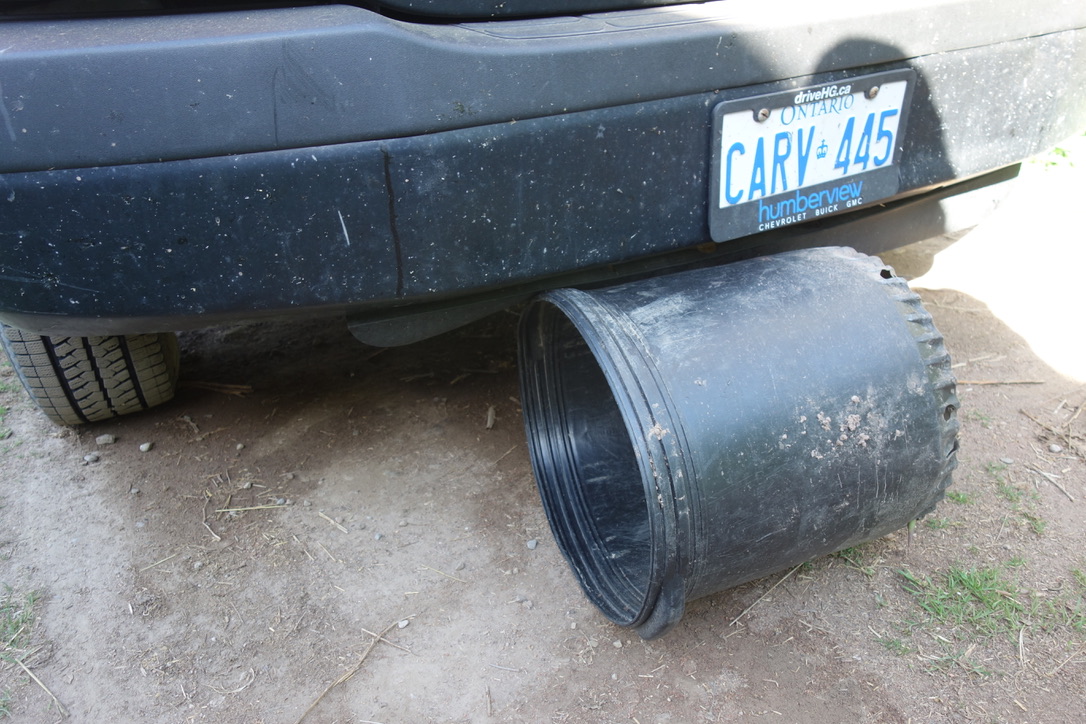
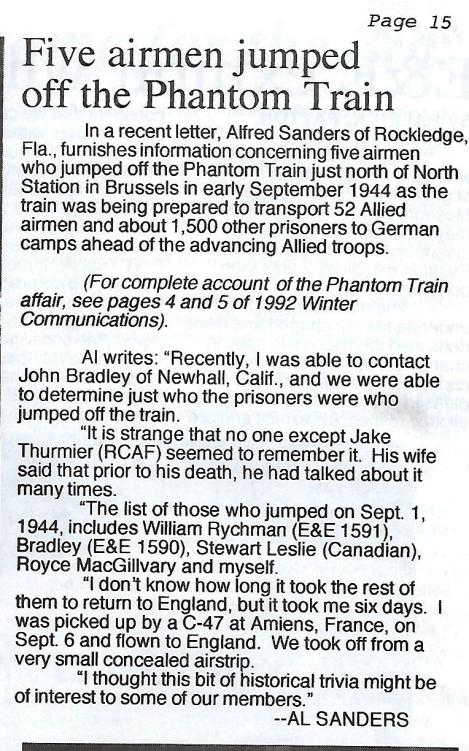 wwiinetherlandsescapelines.files.wordpress.com/2018/08/afees-newsletter-sept-1996.jpg?w=94&h=150 94w,
wwiinetherlandsescapelines.files.wordpress.com/2018/08/afees-newsletter-sept-1996.jpg?w=94&h=150 94w, 

 Translate
Translate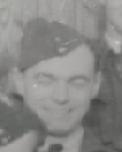 Eric Leo MALLETT / J.6186
Eric Leo MALLETT / J.6186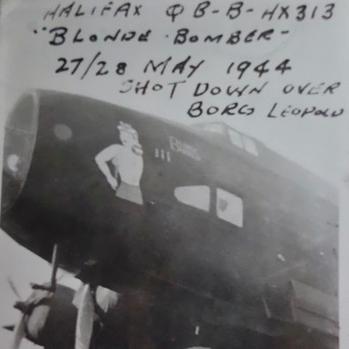
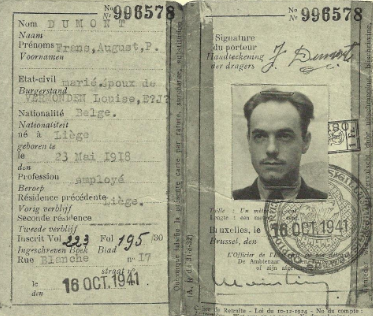
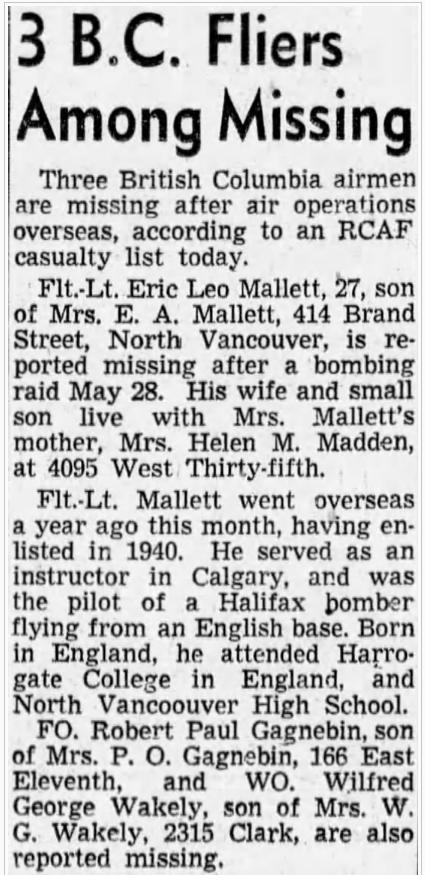
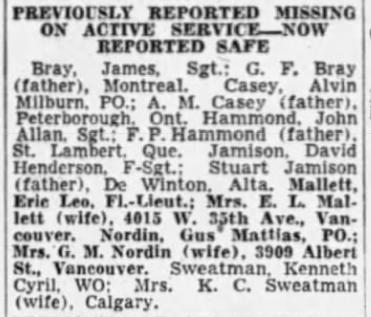
 Translate
Translate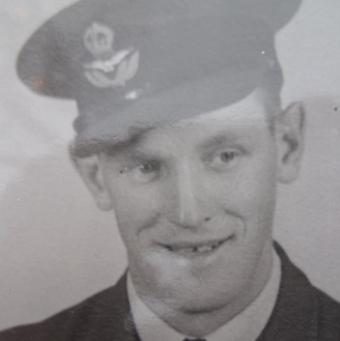
 Kenneth Cyril SWEATMAN / R.20655
Kenneth Cyril SWEATMAN / R.20655